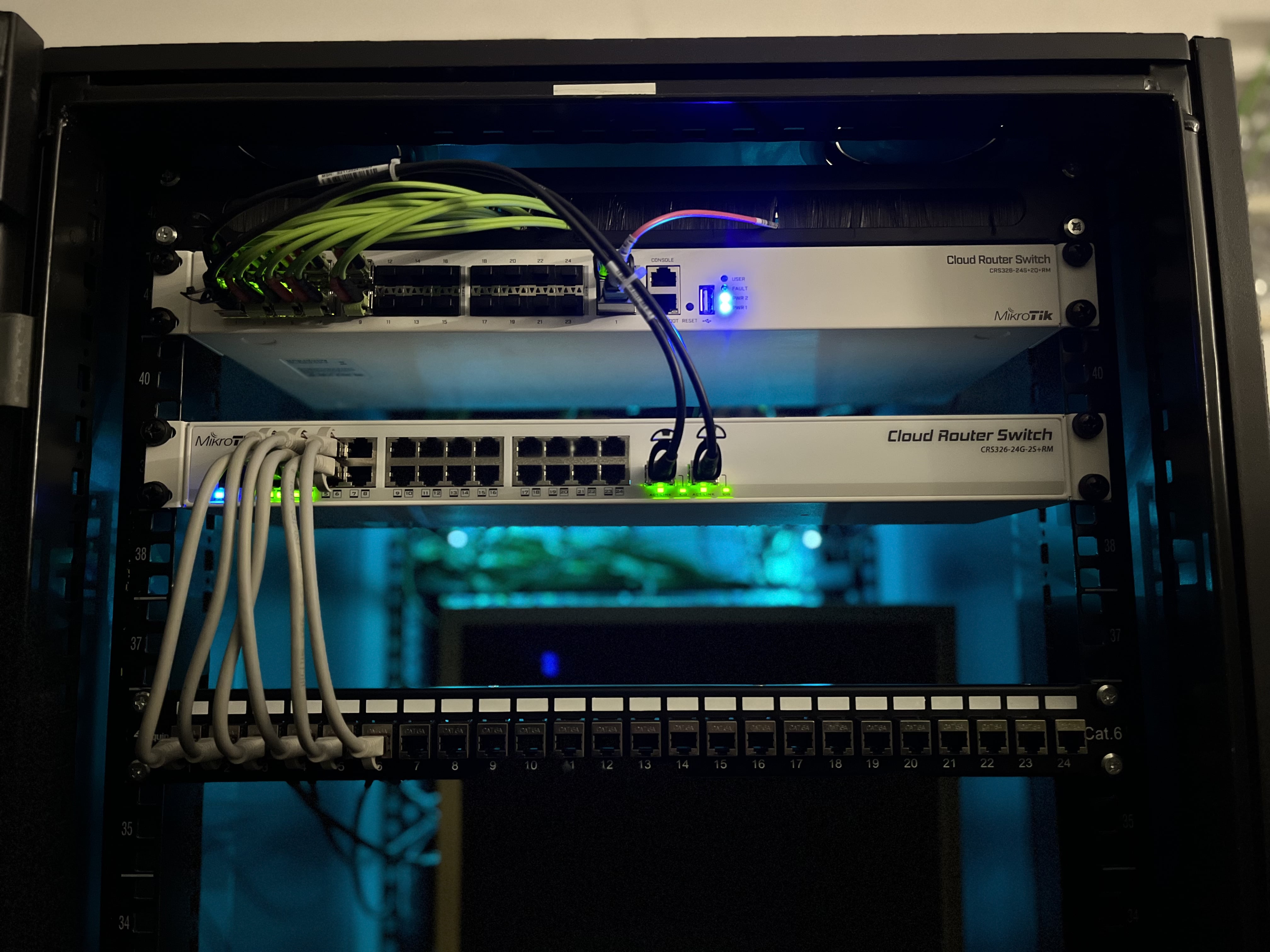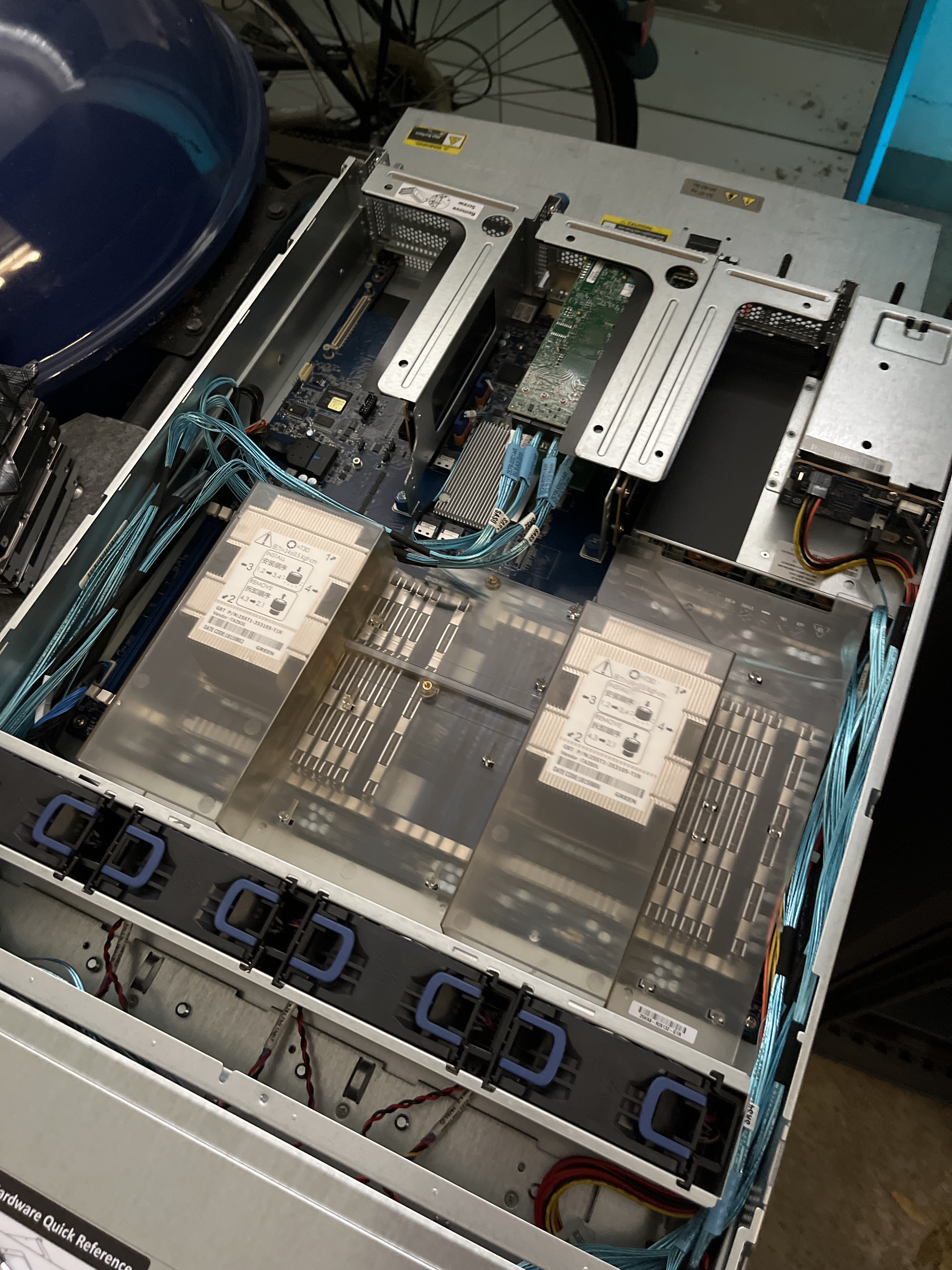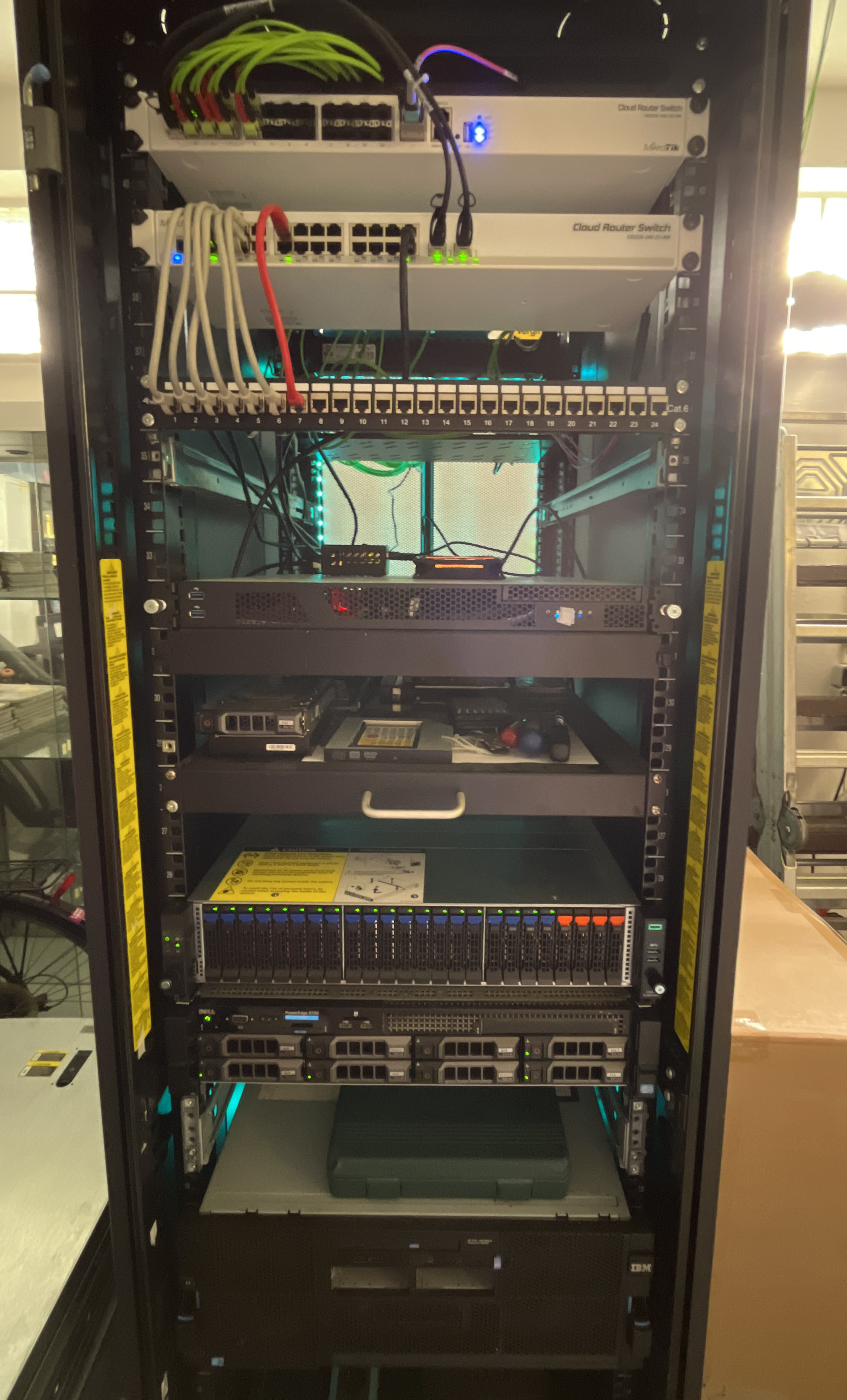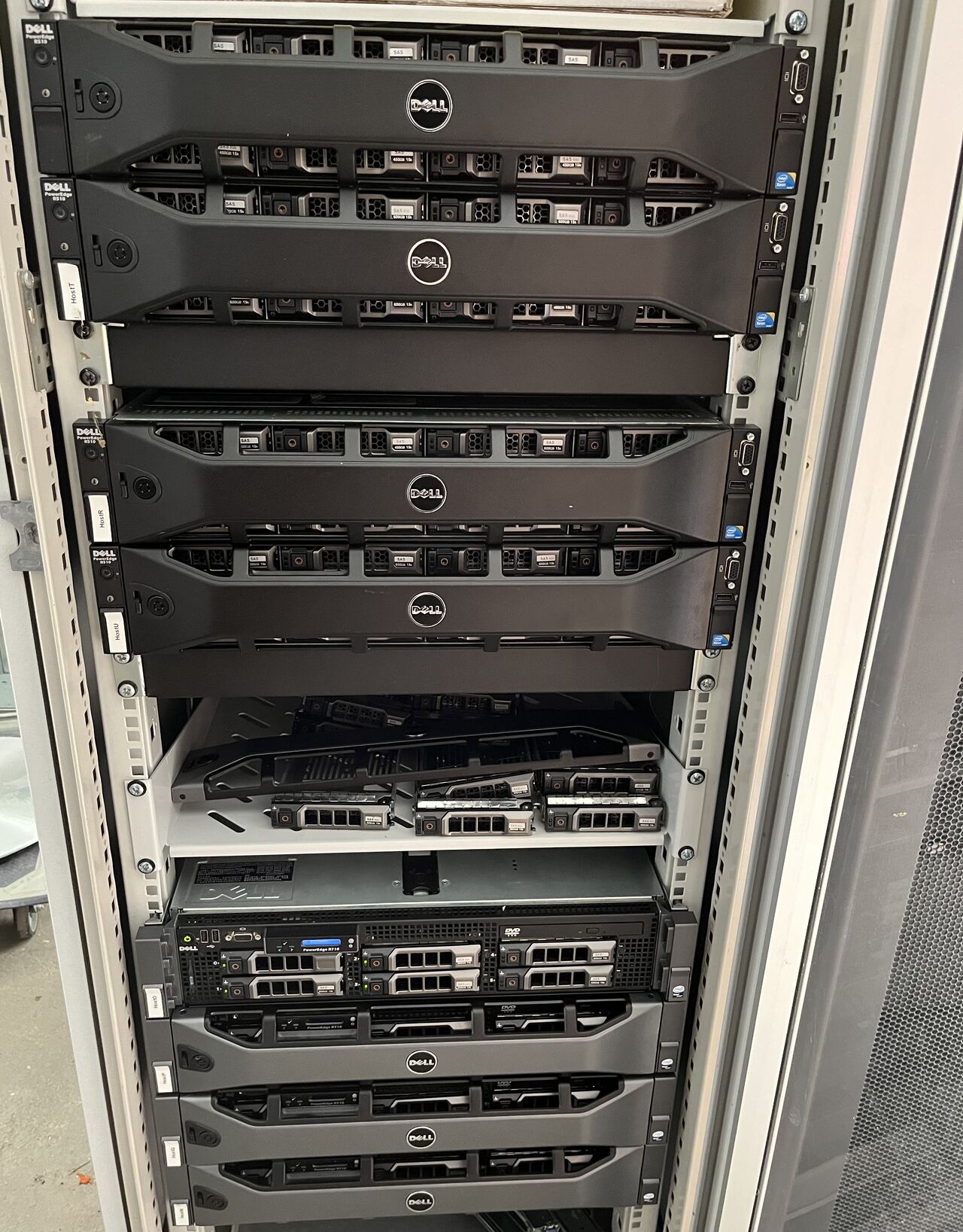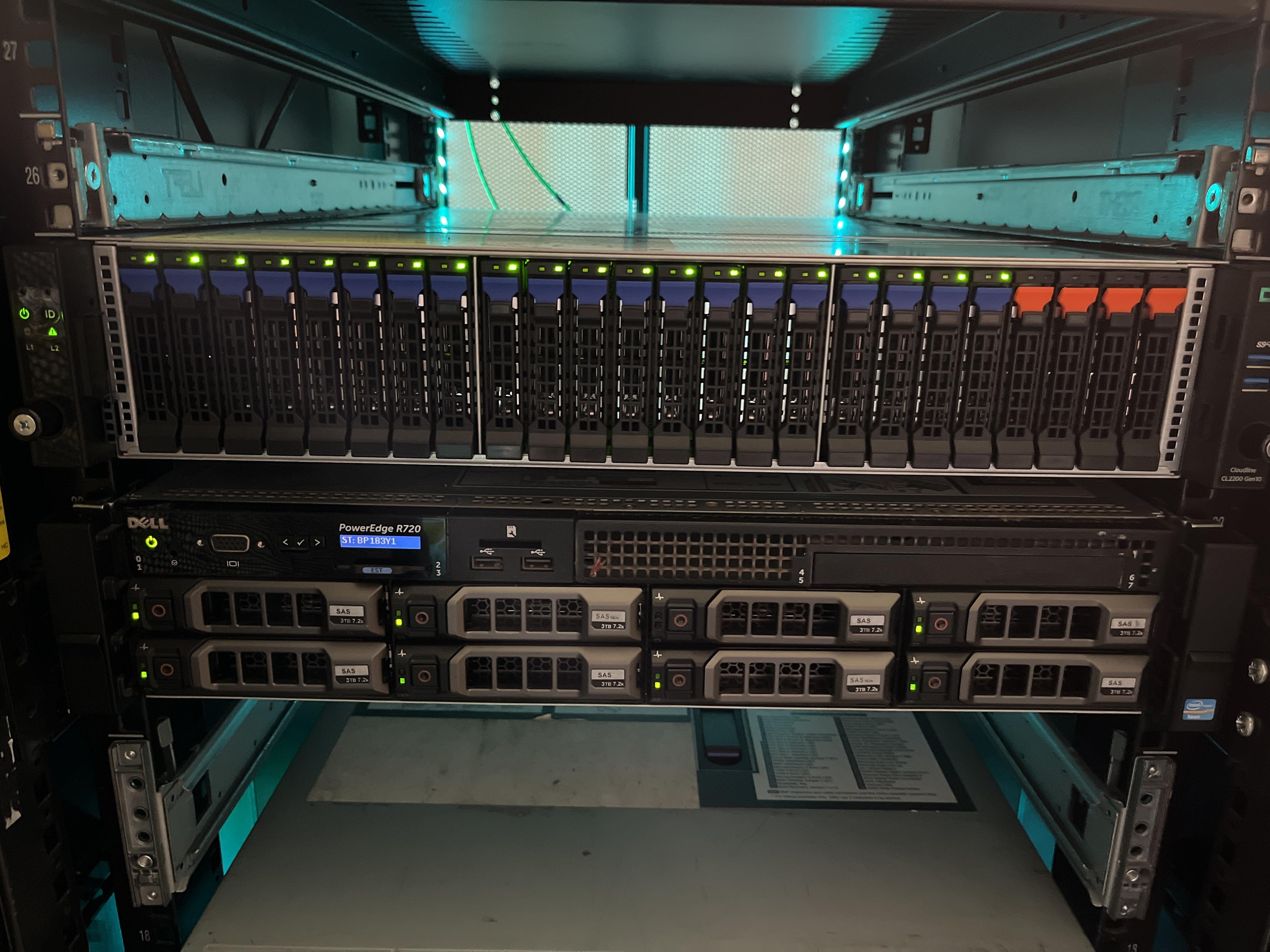
Home Network
A highly available, redundant infrastructure with Proxmox virtualization, 10Gbit/s fiber backbone, and containerized application deployment for development, testing, and production operations.
Infrastructure Overview
The WGLC network (Wagner Local) is a professionally designed infrastructure that serves as a development, testing, and production environment for various projects. The architecture was developed with a focus on high availability, redundancy, and scalability.
Technical Specifications
The current infrastructure includes the following components:
Compute Resources
- Gigabyte R281-N40 (Primary compute cluster)
- Dell PowerEdge R720 (Backup system and NAS)
- 4x Dell PowerEdge R710 (Virtualization cluster)
- 4x Dell PowerEdge R610 (Development and test environment)
Network Infrastructure
- MIKROTIK CRS354 (Core switch with MPLS functionality)
- MIKROTIK CRS326-24S-2Q+RM (Fiber distribution)
- MIKROTIK CRS326-24G-2S+RM (Access layer)
- Fully redundant 10Gbit/s fiber backbone
- LACP link aggregation for critical connections
- VLANs for network segmentation and security
Physical Infrastructure
- 2x 19" server racks with 47U
- 1x 19" server rack with 22U
- Redundant UPS systems with automatic failover configuration
- Structured cabling according to TIA/EIA-568 standard
Virtualization and Containerization
The entire infrastructure is based on a Proxmox cluster that integrates the following technologies:
- Proxmox VE for virtualization with KVM and LXC
- Ceph for distributed, highly available storage
- Docker and Kubernetes for container orchestration
This architecture enables flexible resource allocation and rapid deployment of new services through automated deployment pipelines.
Monitoring and Operations
The following technologies are used for monitoring and operational oversight:
- Prometheus for metrics collection
- Grafana for visualization and dashboards
- InfluxDB for time series data
- Alertmanager for notifications
Future Projects
The infrastructure is continuously being developed. The following projects are in the planning or implementation phase:
- Dynamic Energy Management - Integration of electricity price forecasts for optimized workload planning (In Planning)
- Centralized Battery Backup System - Development of a scalable battery rack with intelligent load distribution and redundancy (In Planning)
- Hardware Security Module (HSM) - Implementation of a dedicated security infrastructure
- WGLC Dashboard - Centralized monitoring and management interface
- AI-powered Security System - Integration of computer vision and anomaly detection
Development History
The development of this infrastructure began with a single HP ProLiant DL160 G6 server and has evolved over several years into a professional environment. This process included numerous learning cycles in the areas of network technology, virtualization, storage technologies, and system administration.
The continuous development of the infrastructure has led to a profound understanding of modern IT architectures. From initial challenges with basic configurations to the implementation of complex high-availability solutions, this development reflects a comprehensive learning process.
Today, this infrastructure enables the rapid deployment of new services and applications with professional DevOps practices, including CI/CD pipelines, Infrastructure-as-Code, and automated testing.
Visual Documentation
